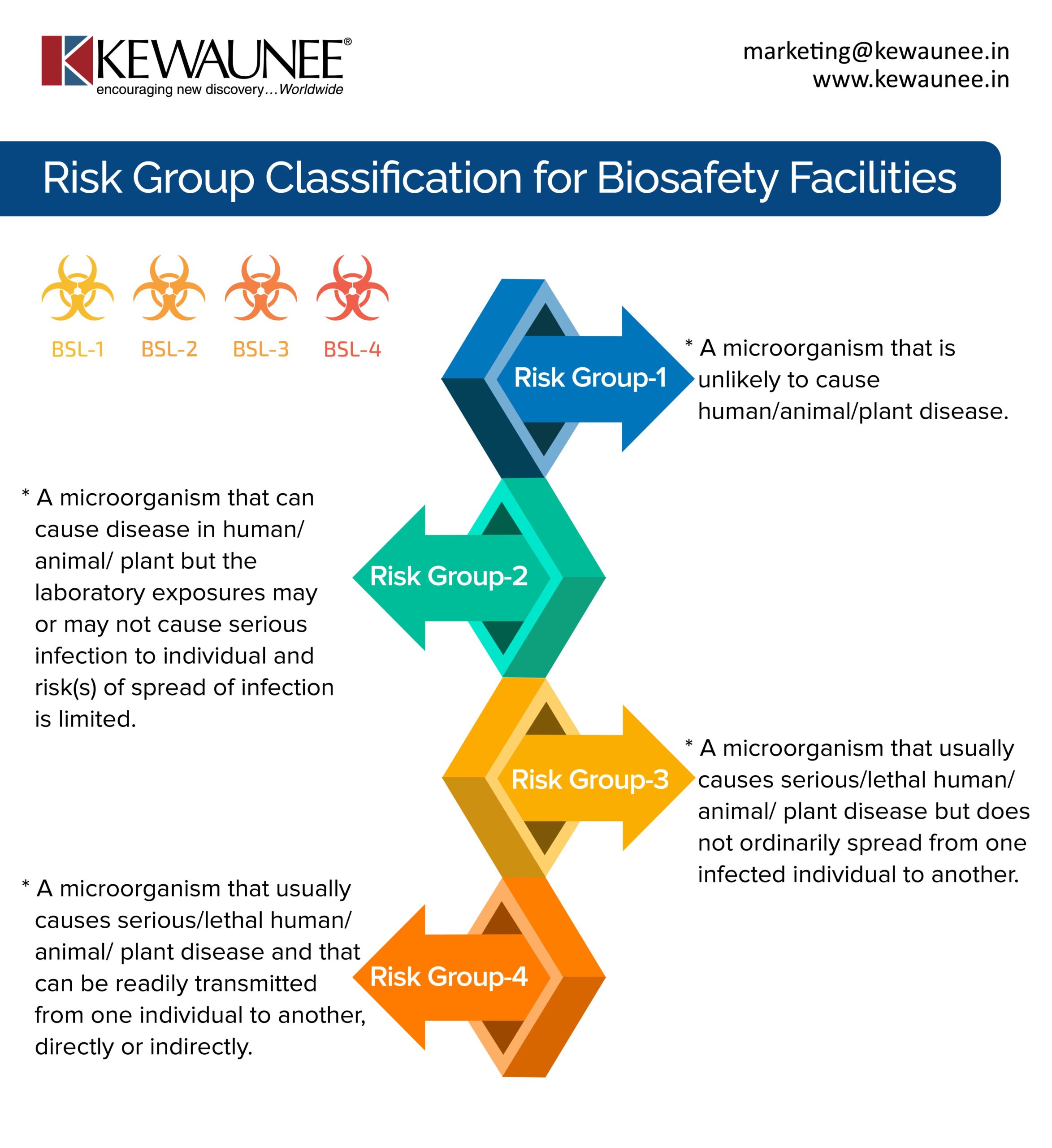Risk Group Classification for Biosafety Facilities
Laboratory biosafety through appropriate containment is a fundamental part of any biological research. In India, the Department of Biotechnology (DBT) is responsible for administrating development and commercialisation in the field of modern biology and biotechnology in India.
One of the important DBT guidelines cover the assessment of risk(s) associated with the organisms and their classification to appropriate risk groups based on:
- Pathogenicity of the organism towards humans/animals/plants.
- Modes of transmission and host range of the organism.
- Availability of effective preventive treatments or curative medicines.
- Capability to cause epidemics.
The infective microorganisms can be classified into four risk groups that allow selection of appropriate biosafety level facilities.
| Risk Group | Description |
| RG 1 | A microorganism that is unlikely to cause human/ animal/plant disease. |
| RG 2 | A microorganism that can cause disease in human /animal/ plant but the
laboratory exposures may or may not cause serious infection to individual and risk(s) of spread of infection is limited. |
| RG 3 | A microorganism that usually causes serious/lethal human/ animal/ plant
disease but does not ordinarily spread from one infected individual to another. |
| RG 4 | A microorganism that usually causes serious/lethal human/ animal/ plant
disease and that can be readily transmitted from one individual to another, directly or indirectly. |
Source: “Regulations and Guidelines on Biosafety of Recombinant, DNA Research and
Biocontainment, 2017”
Kewaunee offers a complete range of microbiological laboratory services ranging from risk assessment to turnkey services.
Comments are closed.











